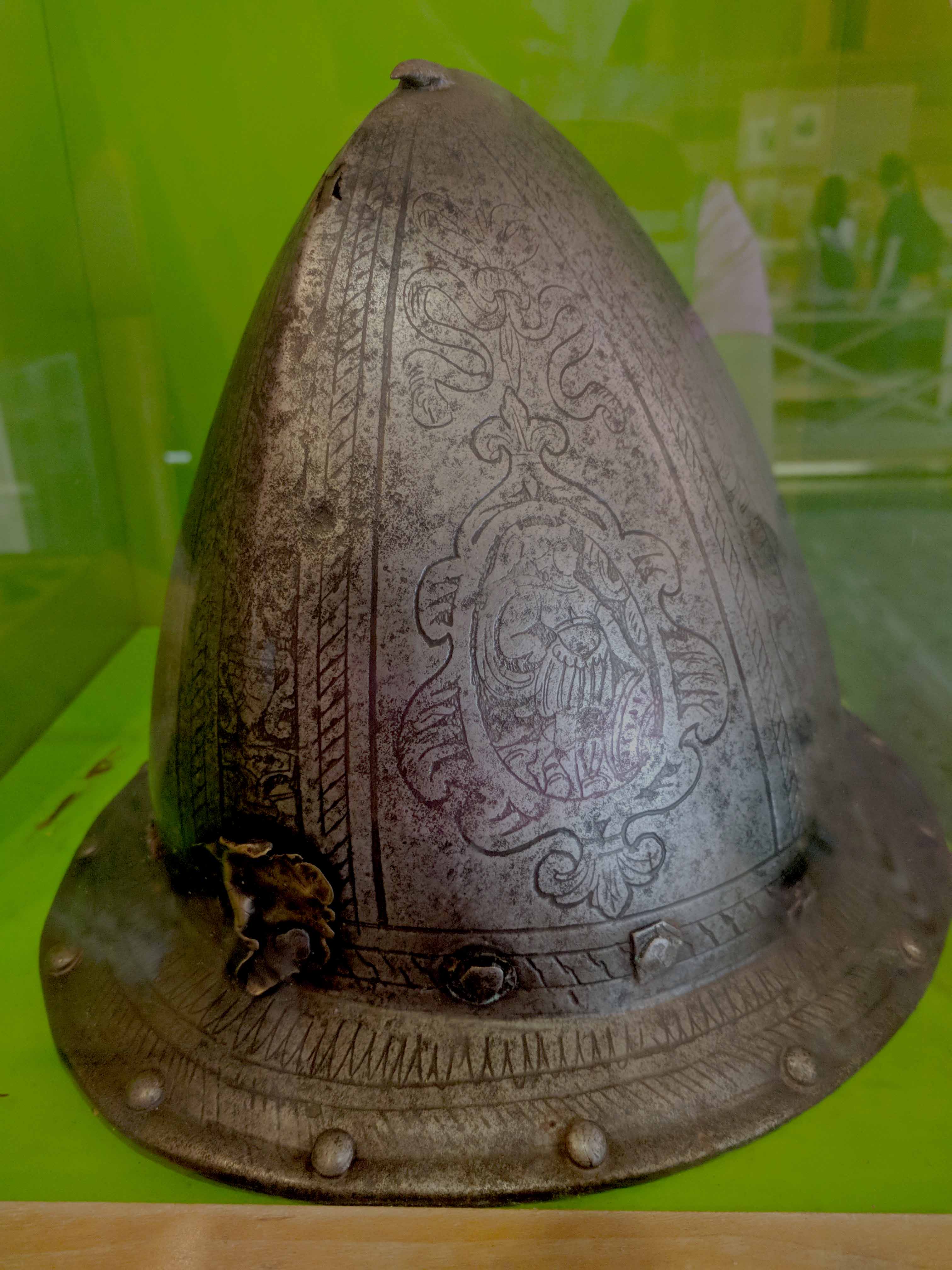Who wore this cabasset?

In the quiet depths of Cumberland National Park's museum, where the relics of the past share their stories in whispers, I stumbled upon a standout: a 16th-century cabasset, snug behind glass. This simple yet intriguing helmet seemed to invite me closer, as if saying, "Come take a look, curious one."
As I explored this artifact, my mind traveled back to when Cumberland Island was home to Spanish soldiers from 1569 to 1572. This connection sparked a flurry of questions in my mind.
At the front of my thoughts was the mystery of the cabasset itself. Why did the Spaniards choose this unusual headgear instead of the more common morion helmets? It was like picking a pogo stick over a bike—definitely raised eyebrows.
I turned to historical texts and scholarly discussions for answers. Helmets of that time were like custom-made clothes, tailored to fit the wearer perfectly. Yet, finding this cabasset among the remnants of a Spanish garrison raised intriguing possibilities. Could it be that it wasn't worn by a Spanish knight at all, but a memento picked up by a former island resident somewhere in Europe as an added home decor?
As I considered this idea, I couldn't help but smile at the whimsy of it all. Here I was, perhaps tilting at windmills, chasing the story of a helmet that might not have belonged to a real knight.
But in the end, I realized that this helmet was more than just metal—it was a puzzle waiting to be solved, with a hint of "Why am I even bothering?" Whoever wore it must have marveled at the questions it raised. But isn't the joy of learning, even if it feels like a quixotic quest, its own reward?